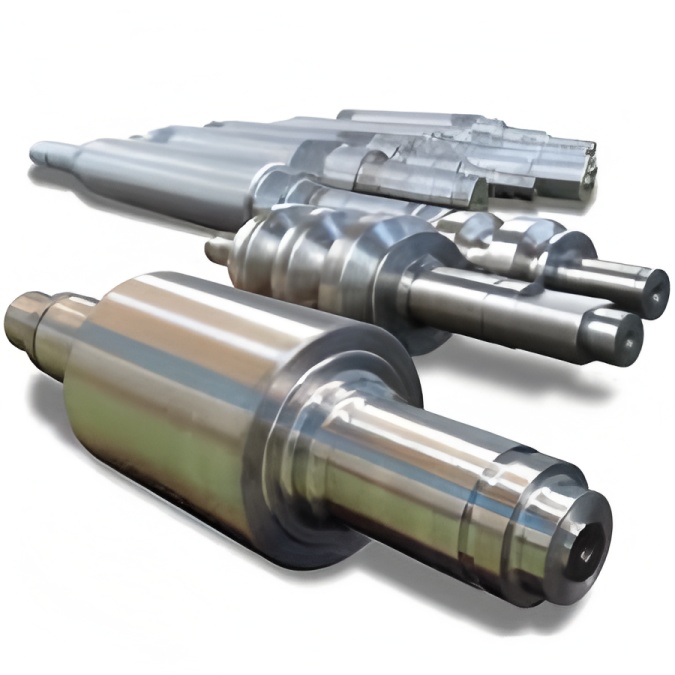Keywords: Wide and heavy plate rolling, work roll bearings, work rolls
To extend the service life of work roll bearings in an extra-heavy plate mill, a steel plant analyzed the operating conditions and current maintenance practices to identify key factors affecting bearing longevity. By establishing improved maintenance procedures and introducing rapid bearing cleaning equipment, the service life of these bearings has been significantly increased.
Results demonstrate that proper maintenance methods and efficient cleaning equipment reduce labor requirements, enhance cleaning effectiveness, extend bearing service life, lower spare parts costs, and improve the operational efficiency of work rolls.
The 4300 mm wide and heavy plate production line is a key project enabling the plant to achieve integrated iron and steel production with a complete process flow. After commissioning, the annual production capacity for wide and heavy plates reached 1.2 million tons, with plans to expand to 1.2–2 million tons through upgrades. The rolling process is as follows: after descaling via high-pressure water, the slab is transported to a four-stand roughing mill for width and thickness reduction. Once the target width is achieved, it is transferred via roller table to a four-stand finishing mill, where it is rolled to the required thickness. The plate is then straightened and sent to the finishing line for cutting to specified length and width.
The work roll bearings in the mill must meet stringent performance requirements. In daily operation, these bearings frequently overheat and fail, resulting in unplanned downtime and increased costs. Thus, in addition to using high-quality branded bearings, regular maintenance and inspection are essential to prolong service life, reduce spare parts consumption, and minimize production interruptions.
Existing Issues
During rolling, the mill generates substantial radial forces. The high-speed rotation of work rolls leads to fatigue pitting and even adhesive wear in the bearings. Moreover, the bearings are large and installed in significant numbers. Each bearing requires off-line cleaning after one week of operation to remove waste grease and inspect the dimensions of the inner ring, outer ring, and rolling elements. The effectiveness of cleaning directly impacts the reliability of bearing inspections.
Currently, most steel enterprises rely on manual cleaning of work roll bearings using cloths and brushes. This method is labor-intensive, inefficient, and often fails to thoroughly clean heavily greased components. Not only does this approach waste labor and maintenance resources, but inadequate cleaning also leads to undetected bearing defects, causing mill failures, wasting valuable production time, and adversely affecting output and economic performance.
Improvement Measures
Rational and Regular Bearing Maintenance
One cause of bearing failure is the lack of regular and appropriate maintenance, which accelerates wear. Accordingly, a systematic maintenance method was developed based on the mill’s production conditions:
(1) Assign a unique number to each bearing and establish a service life record;
(2) Regularly disassemble and clean bearings, check dimensional accuracy of bearing seats and rollers, repair out-of-tolerance parts, and maintain detailed logs;
(3) During high-speed operation, vibration between the bearing outer ring and cage can cause fatigue spalling. To mitigate this, regularly exchange the bearings at both ends of the work roll to distribute rolling force more evenly.
Efficient Bearing Cleaning Equipment
To address the inefficiency and ineffectiveness of manual cleaning, dedicated rapid-cleaning equipment for work roll bearings was developed. As shown in Figure 1, the equipment includes: motor (1), reducer (2), lower handle shaft (3), upper cover (4), upper cover hinge (5), tank hinge (6), outer diameter fixing screw (7), lower handle shaft nut (8), tank (9), drain valve (10), traveling wheel (11), inner spacer (12), bearing (13), lower positioning groove (14), upper positioning groove (15), bearing drive plate (16), lower handle (17), rubber retainer (18), upper retainer (19), handle (20), and support hand (21).
Steps for using the bearing cleaning equipment:
(1) Align and secure the inner diameter of the bearing (13) with the inner spacer (12);
(2) Fill the tank with cleaning fluid;
(3) Attach the drive plate assembly (16) to the bearing outer diameter using the fixing screw (7);
(4) Close the upper cover (4) to engage the upper handle (19) with the rubber retainer (18) and lower teeth;
(5) Secure the lower and upper positioning grooves (14, 15) with bolts;
(6) Turn on the power and rotate the bearing until clean.
The equipment offers a simple structure, low manufacturing cost, easy maintenance, and portability. By fixing the bearing inner diameter and rotating the outer ring, the rollers are thoroughly exposed to cleaning fluid, ensuring efficient and effective cleaning.
Conclusion
(1) Implementing a systematic bearing maintenance method—including record-keeping, standardized procedures, and regular rotation of work roll end bearings—significantly reduces failures and extends service life.
(2) Custom-designed rapid-cleaning equipment enables efficient and effective bearing cleaning while reducing cleaning fluid consumption.
(3) After over a year of application, maintenance costs for work roll bearings were reduced by 25% and the failure rate decreased by 24% compared to the previous year.
In summary, through improved maintenance practices and dedicated cleaning equipment, maintenance costs are reduced, and stable operation of the mill work rolls is ensured. This approach offers significant economic benefits and can serve as a reference for maintaining work roll bearings in other rolling mills.


